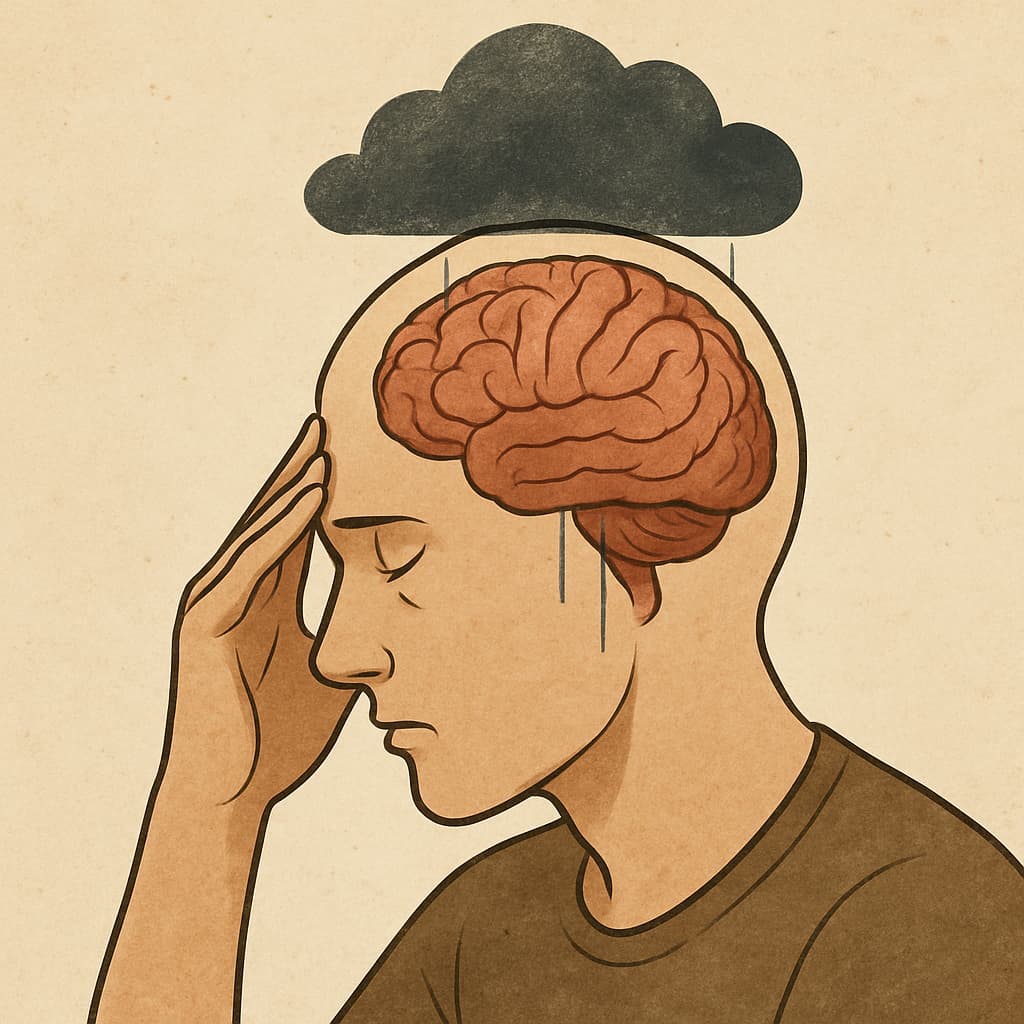In the context of brain injury, adynamia refers to a significant lack of motivation, drive, and difficulty initiating or starting activities, as well as struggling to sustain effort to complete tasks.
It is important to understand that adynamia following a brain injury is often a direct consequence of the injury itself, particularly to the frontal lobes of the brain, which are involved in planning, initiation, and motivation. It is not simply laziness.
Symptoms of adynamia after brain injury can include:
- Low levels of activity
- Difficulty starting tasks
- Difficulty finishing tasks
- Sleeping excessively or late
- Loss of interest in activities
- Social isolation
- Appearing apathetic or indifferent
Causes of Adynamia in Brain Injury
The primary cause of adynamia after a brain injury is damage to the frontal lobes of the brain, particularly the prefrontal cortex (PFC) which has several subregions that are crucial for cognitive functions related to motivation, planning, and initiating actions(1):
- Dorsolateral Prefrontal Cortex (DLPFC): Involved in executive functions like planning, working memory, and cognitive flexibility, which are necessary for initiating and organising goal-directed behaviour. Damage here can lead to difficulty in formulating plans and starting tasks(2,3).
- Anterior Cingulate Cortex (ACC): Plays a significant role in motivation, drive, and the emotional aspects of initiating and sustaining actions. It’s involved in the cost-benefit analysis of effort and the subjective experience of motivation. Damage to the ACC can result in a profound lack of drive(4,5).
- Orbitofrontal Cortex (OFC): Involved in decision-making, reward processing, and linking emotions to behaviour. Damage here can affect the ability to appreciate the value of goals and thus reduce motivation to pursue them(6).
Damage to subcortical structures and their connections to the frontal lobe can also contribute significantly to adynamia:
- Basal Ganglia (especially the Nucleus Accumbens): A key part of the brain’s reward circuitry, heavily reliant on dopamine. Damage or disruption to the pathways connecting the basal ganglia to the frontal cortex can impair the feeling of reward associated with activities, thus reducing motivation.
- Thalamus: Acts as a relay station for information to and from the cortex. Thalamic lesions can disrupt fronto-cortical circuits involved in initiation and motivation.
Neurochemical Basis
Several neurotransmitter systems are critical for motivation and are often affected by brain injury, contributing to adynamia:
- Dopamine: This neurotransmitter plays a central role in reward, motivation, and motor control. The mesolimbic dopamine pathway, projecting from the ventral tegmental area (VTA) to the nucleus accumbens, is particularly important for the drive to seek rewards. Brain injury can disrupt dopamine production, release, or receptor function, leading to decreased motivation and difficulty initiating goal-directed behaviour(7.8),
- Norepinephrine: Involved in arousal, attention, and the “fight-or-flight” response, norepinephrine also contributes to motivation and energy levels. Damage to brain regions that produce or utilise norepinephrine can result in fatigue and reduced drive(9).
- Serotonin: While more commonly associated with mood regulation, serotonin also influences motivation and impulsivity. Disruptions in serotonin pathways after brain injury can indirectly affect the initiation and persistence of behaviour(10).
Disruption of Neural Circuits
Adynamia isn’t just about damage to a single area or neurotransmitter system; it often results from the disruption of complex neural circuits that integrate information related to goals, rewards, effort, and motor planning. For example:
- Fronto-striatal circuits: These pathways connect the prefrontal cortex with the basal ganglia and are crucial for selecting, initiating, and maintaining actions. Damage along these circuits can impair the brain’s ability to translate intentions into actions(11).
- Motivational circuits: These networks involve the frontal cortex, basal ganglia, amygdala (involved in emotion), and brainstem, working together to drive behaviour towards salient stimuli and goals. Brain injury can disrupt the communication within these circuits, leading to a diminished sense of “wanting” or the drive to act.
In Summary
The science behind adynamia in brain injury points to a complex interplay of:
- Structural damage: Primarily to the frontal lobes and their connections to subcortical structures.
- Neurochemical imbalances: Particularly involving dopamine, norepinephrine, and serotonin.
- Disrupted neural circuitry: Affecting the brain’s ability to process motivation, plan actions, and initiate behaviour.
Understanding these underlying mechanisms is crucial for developing targeted rehabilitation strategies to help individuals with brain injuries regain motivation and improve their ability to initiate and sustain activities.
Understanding that the brain injury is the cause of a person’s apparent apathy, can be of significant importance to both families and rehabilitation providers. Families and friends of a brain injured person frequently experience frustration at the injured person’s inability to engage in (or complete) tasks, their need to sleep excessively, and their apparent lack of motivation to do anything. Similarly rehabilitation providers may become frustrated that the prescribed home-based therapy programs are not completed, or in-person appointments are missed and in some instances therapy is ceased as a result.
It is important to recognise that brain injured people suffering with adynamia require additional support and encouragement to assist them to prepare for and attend rehabilitation activities, as well as to manage domestic tasks. In some instances, this support may be required on an ongoing basis.
If you or someone you care for is struggling with adynamia following a brain injury, Independent OT Medico Legal can help. With extensive expertise in neurological injury and functional assessment, our occupational therapists understand the complexities of motivation loss and how it impacts daily living. We provide comprehensive brain injury medico-legal assessments that consider the full cognitive and behavioural picture. Contact us today to learn how our evidence-based insights can guide better outcomes for individuals living with brain injury.
References
- https://pmc.ncbi.nlm.nih.gov/articles/PMC8617292/
- https://academic.oup.com/cercor/article/33/13/8265/7152259?login=false
- https://pmc.ncbi.nlm.nih.gov/articles/PMC4156912/#:~:text=2%2C%20left)%2C%20can%20result,3).
- https://pmc.ncbi.nlm.nih.gov/articles/PMC10250292/
- https://pmc.ncbi.nlm.nih.gov/articles/PMC6442740/
- https://pmc.ncbi.nlm.nih.gov/articles/PMC7749795/#:~:text=The%20orbitofrontal%20cortex%20is%20a,reward%20value%2C%20mood%20and%20emotion
- https://my.clevelandclinic.org/health/articles/22581-dopamine
- https://pmc.ncbi.nlm.nih.gov/articles/PMC2238694/#:~:text=The%20ML%2DDA%20system%20is,appetitive%20motivations%2C%20attention%20to%20rewards
- https://my.clevelandclinic.org/health/articles/22610-norepinephrine-noradrenaline
- https://pmc.ncbi.nlm.nih.gov/articles/PMC5100997/
- https://academic.oup.com/cercor/article/31/12/5308/6310409?login=false




